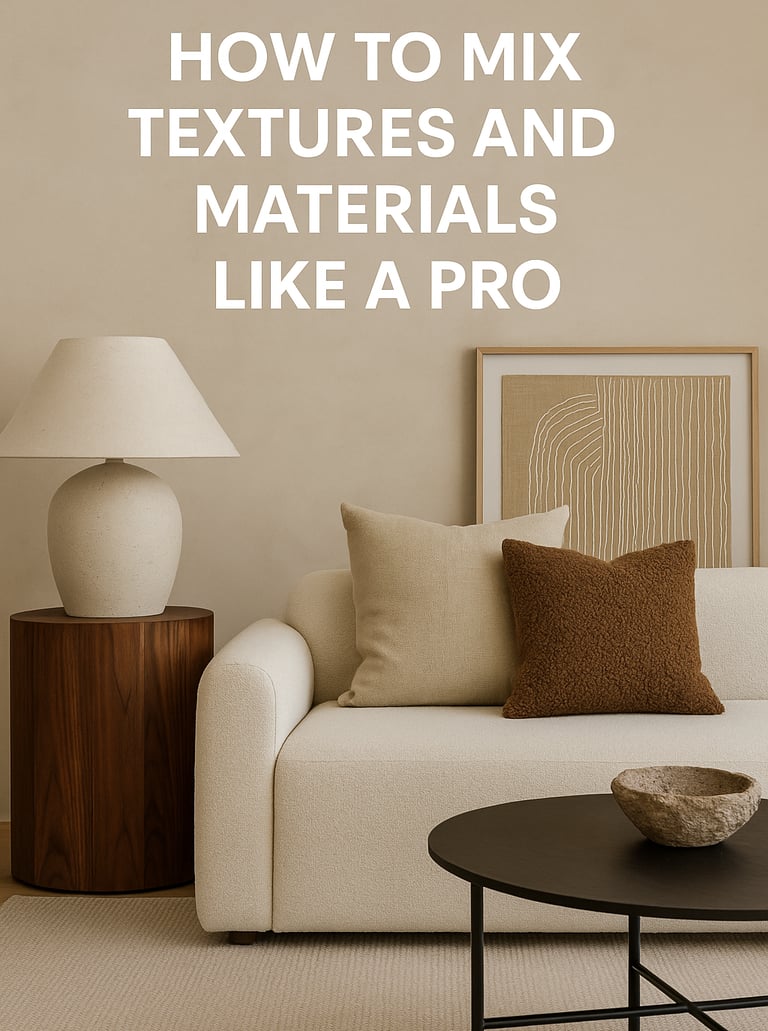How to Mix Textures and Materials Like a Pro
Want to take your interior design game to the next level? Learn the art of mixing textures and materials like a pro.
4/21/20252 min read


How to Mix Textures and Materials Like a Pro
One of the most underrated secrets to stunning interior design is mastering the mix of textures and materials. When done right, it brings depth, contrast, and character to any space—whether you're designing a cozy bedroom or a sleek living area.
In this blog, we’ll walk you through how to blend textures and materials like a professional designer to create visually rich and balanced interiors.
1. Start with a Solid Base
Choose a primary material or finish to anchor the space. It could be a neutral-toned fabric, wooden flooring, or a marble countertop. This sets the tone and allows other textures to shine without overwhelming the room.
2. Layer Different Textures
Introduce a variety of textures—soft, rough, glossy, matte—to add depth and visual interest. Think:
Velvet cushions on a linen sofa
Woven rugs over polished wood floors
Raw stone walls paired with smooth leather chairs
Layering creates contrast and keeps the eye engaged.
3. Stick to a Cohesive Color Palette
When mixing textures, keep the color scheme relatively simple and consistent. This allows you to play with texture without creating visual chaos. Neutrals work well as a foundation, allowing texture to take center stage.
4. Use Contrasting Materials Purposefully
Pair opposites to strike a perfect balance:
Glass + metal = modern minimalism
Wood + wool = cozy warmth
Concrete + brass = urban sophistication
Don’t be afraid to mix soft and hard surfaces for a curated, intentional feel.
5. Let Lighting Highlight the Details
Proper lighting enhances the impact of textures. Use ambient and task lighting to highlight rough surfaces, layered textiles, or reflective finishes. Shadows and highlights can make materials come alive.
6. Add Natural Elements
Incorporate organic materials like jute, rattan, linen, clay, or greenery to create warmth and balance artificial finishes. Nature-inspired textures feel calming and timeless.
7. Don’t Overdo It
Less is more. Avoid cluttering your space with too many competing textures. Stick to 2–3 key materials per room and repeat them in different elements (e.g., a linen curtain, linen cushion, and linen lampshade).
Final Thought:
Mixing textures and materials isn’t just about design—it’s about how a space feels. With the right balance, you can create a home that looks layered, lived-in, and effortlessly stylish.
Follow Us
Crafting interiors that reflect your unique lifestyle.
Contact
+971-5446-17571
©Ivory&Stone Studio- All rights reserved
